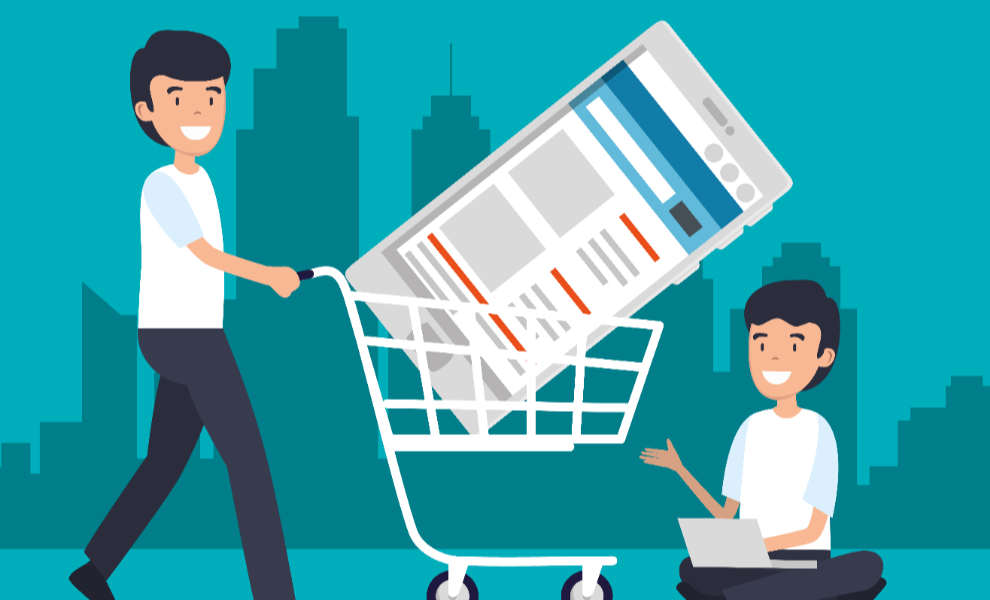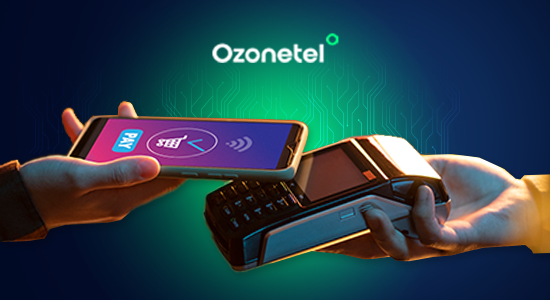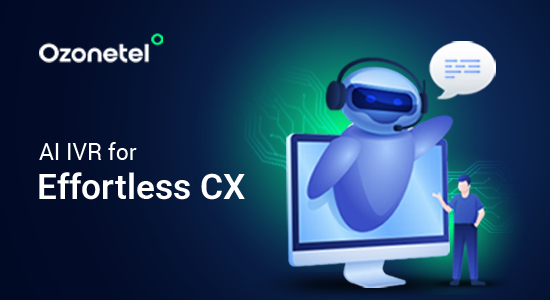- Resources
- The Complete Guide to Customer Satisfaction
The Complete Guide to Customer Satisfaction

Customer satisfaction is no longer a nicety, it’s essential for business survival and growth. Nobody likes long wait times, confusing products, or frustrating customer service. A negative experience can damage your brand image or even drive your customers away.
It’s crucial to understand that satisfied customers are more likely to become loyal advocates, leading to increased sales and reduced customer acquisition costs. By prioritizing customer satisfaction, businesses can build lasting relationships and achieve long-term success.
Read along as we talk more about customer satisfaction, including actionable strategies to elevate your customer experience, build loyalty, and leave the competition in the dust.
In this article, we will explore:
- 1. What is Customer Satisfaction?
- 2. Importance of Customer Satisfaction
- 3. Challenges in Maintaining Customer Satisfaction
- 4. How to Measure Customer Satisfaction?
- 5. Factors Influencing Customer Satisfaction
- 6. Strategies to Improve Customer Satisfaction
- 7. How Ozonetel can Help Boost Customer Satisfaction (Examples)
- 8. Tools Used for Achieving Customer Satisfaction
- 9. How Ozonetel Digital Customer Experience Solution Can Help You Achieve This
Customer Lifetime Value Meaning
Customer Lifetime Value (CLV) measures the total profit your company can expect to generate from an average customer throughout their entire relationship with you.
Looking for the best AI call center software? You’re in the right place. It’s no secret that AI is changing how businesses talk to their customers. But with so many options out there, finding the right one can be tricky.
Don’t worry, though – we’ve got you covered. In this article, we’ll break down the top AI call center tools. Whether you’re running a small business or managing a big customer service team, we’ll help you find software that makes your life easier and your customers happier. Let’s get started!
What is Customer Satisfaction?
Customer satisfaction is the measurement of how well a company’s products, services, and overall experience meet or exceed customer expectations and requirements. It reflects the degree to which customers feel positive, content, and fulfilled in their interactions and relationships with a business.
Customer satisfaction is a critical metric that provides insights into how successfully a company is delivering value and meeting the needs of its customer base. It serves as a bar for the health and performance of an organization, as satisfied customers are more inclined to remain loyal, make repeat purchases, and recommend the brand to others.
Companies that prioritize customer satisfaction and actively work to understand and react to customer needs and preferences are better positioned to foster long-term, mutually beneficial relationships with their customer base, driving sustainable growth and success.
Importance of Customer Satisfaction

Customer satisfaction is essential because it indicates that your customers like what you’re doing. According to research, customer happiness leads to increased customer retention, higher lifetime value, and a stronger company reputation.
Let’s understand why customer satisfaction is important in more detail:
Reduces Customer Churn
Keeping customers satisfied is crucial to reducing customer churn and attrition. In today’s competitive landscape, customers have abundant choices, and a poor customer service experience can drive them away. Statistics indicate that 66% of B2B customers and 52% of B2C customers stopped buying after encountering a negative service interaction. By ensuring your customer service team goes above and beyond to keep CSAT scores high, you can minimize the risk of customers defecting to competitors. For instance, if your software company has 1,000 monthly subscribers at $20 each, and your CSAT drops from 90% to 70%, you could lose $6,000 in revenue the next month and $72,000 over a year. Retaining customers through exceptional service is vital for maintaining a competitive edge and boosting loyalty and repeat business.
Boosts Customer Loyalty and Recurring Revenue
Satisfied customers have a better chance of remaining loyal, making repeat purchases, and trying new products or services. In fact, existing customers spend 31% more and are 50% more likely to explore new offerings compared to new customers. Higher customer loyalty directly correlates with elevated customer satisfaction levels. For a subscription-based business model, ensuring customer happiness can significantly impact your bottom line. If your CSAT drops, you risk losing a substantial portion of your recurring revenue stream. Conversely, increasing customer loyalty and retention by just 5% can boost profits by 25-95% while reducing customer acquisition costs, which can be five times higher than retaining an existing customer.
Encourages Brand Advocacy
Customer satisfaction is closely tied to brand advocacy. While unhappy customers can damage your reputation by sharing negative experiences with an average of 15 people, satisfied customers are likely to promote your brand. Research shows that 72% of satisfied customers share positive experiences, and 92% of consumers trust recommendations from people they know. By improving CSAT scores, you can leverage the power of word-of-mouth marketing, as happy customers become ambassadors for your brand, potentially attracting more business.
Improves Efficiency and Productivity
Evaluating your CSAT and other customer service KPIs can help recognize areas for improvement, streamline processes, and boost agent productivity. For example, if your agent’s resolve rate has declined, you may discover a need for additional training to resolve tickets faster. Addressing such bottlenecks can make the entire operation more efficient, allowing agents to spend less time firefighting and more time on productive tasks. Soliciting agent feedback can also uncover tedious or problematic areas, guiding you toward solutions that ultimately improve CSAT scores and overall revenue.
Increases Employee Satisfaction
When your customer service team is happy and supported, they are much more likely to provide exceptional service. Removing barriers and creating a smooth workflow not only improves agent productivity but also boosts morale. According to a recent survey, 55% of customer service agents cited a supportive work environment as the most important factor for doing their job well. Recognizing and rewarding agents for improving CSAT scores can further enhance engagement and job satisfaction, leading to better performance and lower turnover.
Provides Upselling and Cross-Selling Opportunities
Satisfied customers are more likely to return for additional purchases, providing opportunities for upselling and cross-selling complementary products or upgraded services. Research indicates that 60-70% of happy customers make repeat purchases. When customers are already pleased with your product and service, they are more receptive to exploring related offerings, increasing your sales revenue. For example, if a customer is delighted with the performance of your entry-level software, they may be open to upgrading to a premium version with more features.
Helps You Stand Out from the Competition
In an era where customers often struggle to reach human support, providing an exceptional customer service experience can set you apart from competitors. Offering omnichannel support options, such as live chat, responsive social media channels, and accessible human agents, can create a positive and differentiated experience. Training agents to proactively ask if customers need additional assistance and implementing automated confirmations for help tickets can further enhance satisfaction. These small factors contribute to an overall positive customer experience, improving CSAT and giving you a competitive edge.
Challenges in Maintaining Customer Satisfaction
Now that you know the importance of customer satisfaction, let’s go over some challenges that you might face in when trying to achieve this:
Managing Customer Expectations
As your customer base grows, the expectations they have for your products or services will become increasingly diverse. For instance, some customers may use a product primarily for one purpose, while others utilize it differently. The challenge lies in understanding and aligning with each customer’s unique expectations. The solution is to proactively engage with customers, ask them about their intended use cases, and gather feedback on whether the product or service is meeting their needs. By having open dialogues, you can gain the context necessary to address any misaligned expectations and provide tailored support.
Handling Angry Customers
Dealing with angry or upset customers is one of the most challenging aspects of customer service. These interactions can be emotionally charged, and agents must remain calm and level-headed. The solution is to train agents in de-escalation techniques, such as active listening, empathizing with the customer’s frustration, and apologizing when appropriate. By avoiding defensiveness or escalation, agents can create an environment where your customer feels heard and understood, increasing the likelihood of a resolution.
Ensuring Prompt Response
During peak periods, such as product launch periods, call volumes can surge, leading to long wait times and overwhelmed agents. While reducing call volumes may not be possible, the solution is to keep customers informed and updated. Implement regular system updates that provide customers with an estimated wait time and reassure them that their call is still in the queue. This transparency and communication can help manage expectations and prevent frustration from building during extended hold periods.
Transferring Calls to Other Agents
Sometimes, a customer’s issue may require the expertise of a specialized agent or supervisor. While call transfers are intended to improve customer’s experience, they can lead to frustration if information is lost or the customer must repeat their story. The solution is to establish clear call transfer protocols, where the initial agent provides a comprehensive summary of the customer’s issue, the steps taken so far, and the reason for the transfer. This ensures a smooth transition and prevents the customer from feeling like they are starting from scratch.
How to Measure Customer Satisfaction?
To gain a better understanding of customer sentiment, businesses often complement CSAT with additional metrics like Net Promoter Score (NPS).
CSAT surveys, typically conducted at the end of a transaction or interaction, ask customers to rate their satisfaction level, often on a scale from “very satisfied” to “very unsatisfied.” These surveys are short, usually comprising one or two targeted questions, making them easy for customers to complete. The classic CSAT question, “How satisfied were you with the product/service?” provides a direct assessment of the customer’s experience.
However, CSAT alone may not paint the full picture of customer loyalty and advocacy. This is where NPS comes into play. NPS surveys go beyond satisfaction to gauge customers’ likelihood of recommending a product or service to others. Respondents are asked a single question: “From 0 to 10, how likely are you to recommend our service to a friend?” Based on their responses, customers are categorized as:
- Promoters (9-10 rating): Loyal enthusiasts who will fuel growth through positive word-of-mouth.
- Passives (7-8 rating): Satisfied but not enthusiastic customers who are vulnerable to competitive offerings.
- Detractors (0-6 rating): Unhappy customers who can hurt your brand through negative feedback.
The NPS can be measured by subtracting the percent of detractors from the percent of promoters, providing a score between -100 and 100. A positive NPS is generally considered good, with scores above 50 being excellent.
By combining CSAT and NPS, businesses gain a more comprehensive view of customer sentiment. CSAT provides a direct measure of satisfaction with a specific interaction, while NPS reflects overall customer loyalty and the likelihood of advocacy.
Factors Influencing Customer Satisfaction

The following ten customer satisfaction characteristics are the foundation of a successful business. Prioritizing these variables in your consumer experience strategy can result in increased client loyalty, positive word of mouth, and long-term growth. Here’s a detailed explanation for each factor:
Accessibility
Ensuring your products, services, and support channels are readily available and easily accessible is the foundation of customer satisfaction. Whether it’s a user-friendly website, responsive mobile apps, or conveniently located physical locations, customers expect to interact with your brand seamlessly and without barriers. Additionally, providing multiple communication channels, such as phone, email, live chat, and social media, allows customers to reach out on their preferred platform, enhancing their overall experience.
Empathy
Demonstrating genuine empathy towards your customers is a powerful driver of satisfaction. It involves actively listening to their concerns, understanding their emotions, and responding with compassion. For instance, if a customer is frustrated due to a product issue, acknowledging their frustration and expressing empathy can go a long way in diffusing the situation and building trust. Businesses that cultivate empathy create strong, emotional bonds with customers, leading to unwavering loyalty and satisfaction.
Response Time
In today’s fast-paced world, customers expect swift and timely responses to their queries and concerns. Delayed or prolonged response times can lead to frustration and dissatisfaction. Implementing efficient processes and equipping your support team with the necessary tools and resources to provide prompt resolutions is crucial. For example, leveraging chatbots or self-service portals can ensure immediate assistance for common inquiries while more complex issues are escalated to human agents swiftly.
Personalization
Customers appreciate feeling valued and recognized as unique individuals. Personalization involves tailoring interactions, product recommendations, and marketing efforts to align with individual preferences and behaviors. This can be achieved through data-driven approaches, such as leveraging customer purchase histories, browsing patterns, and feedback to deliver personalized experiences. For instance, personalized product recommendations or tailored marketing messages can create a sense of relevance and importance for your customers, fostering satisfaction and long-term loyalty.
Convenience
Prioritizing convenience is essential for customer satisfaction. This encompasses everything from user-friendly interfaces and intuitive navigation to streamlined processes and accessible customer support. Customers seek effortless experiences, and businesses that prioritize convenience ensure that customers can smoothly navigate their offerings, leading to heightened satisfaction. For example, offering self-service options, such as online ordering or automated returns processes, can significantly enhance the customer experience and reduce friction points.
Value
Delivering exceptional value is not limited to offering competitive prices; it’s about exceeding customer expectations at every touchpoint. Businesses that consistently provide value-added services, superior quality, and exceptional experiences make customers feel they are getting more than they paid for, leading to delighted customers. For instance, offering complimentary training or educational resources or providing personalized consultations can create a sense of added value and differentiate your brand from competitors.
Simplicity
Customers appreciate simplicity and ease of use. Complex processes, confusing interfaces, or convoluted product offerings can quickly lead to frustration and dissatisfaction. Prioritizing simplicity ensures that customers can interact with your brand effortlessly, leading to clarity and satisfaction. For example, streamlining checkout processes, providing clear and concise product information, and offering intuitive navigation can significantly improve the customer experience and foster satisfaction.
Quality
Quality is a non-negotiable factor for customer satisfaction. Customers expect top-notch products and services, and anything less can lead to disappointment and dissatisfaction. Businesses that prioritize quality not only meet but consistently exceed customer expectations, building trust and long-lasting satisfaction. This can be achieved through stringent quality control processes, sourcing premium materials, and continuously seeking feedback to identify areas for improvement.
Reasonable Prices
Fair and competitive pricing is essential for customer satisfaction. Overpricing or hidden costs can quickly erode customer trust and lead to dissatisfaction. Customers are happiest when they perceive they’re getting a fair deal, and businesses that align their pricing with customer expectations create contented customers. Transparency in pricing, clearly communicating value propositions, and offering flexible pricing options can help manage customer expectations and foster satisfaction.
Appreciation
Appreciation involves going the extra mile to show customers you value their business. Whether it’s a personalized thank-you note, exclusive offers, or surprise gifts, acts of appreciation create emotional connections and foster a sense of loyalty. Customers who feel appreciated become fiercely loyal and satisfied patrons of your brand. For example, offering loyalty programs, personalized discounts, or celebrating milestones with customers can significantly enhance their overall experience and satisfaction.
Strategies to Improve Customer Satisfaction
Customer satisfaction techniques enable you to track your success, identify areas for improvement, and enhance your product and customer experience. And to help you out, we have already done the research, and here are a few ways you can use to empathize with your customer’s requirements, improve your customer journey, and boost your CSAT score:
Actively Listen to Customers
Gathering direct customer feedback is crucial for understanding satisfaction levels and areas for improvement. For this, conduct user interviews, run focus groups for new initiatives, and implement feedback widgets on key pages to capture in-the-moment reactions. Show appreciation for customer input through rewards or incentives. This active listening approach helps you retain customers, build loyalty, and address pain points before they negatively impact the experience.
Offer Proactive Multi-Channel Support
Customers expect seamless support across multiple channels – website, live chat, social media, help centers, and more. Implement chatbots or live chat for quick resolutions, maintain a social media presence, and create comprehensive help resources like guides, tutorials, and knowledge bases. Train support agents in active listening, proactive solutions, transparency, and empathy to deliver a positive, cohesive experience.
Personalize the User Experience
No two customer journeys are identical, so personalize your approach. Develop ideal customer profiles and segment users accordingly. Automate messaging and product recommendations based on individual needs and behaviors. Offer self-service resources tailored to different customer types and leverage AI to monitor behavior and suggest relevant products or content. Personalization shows your commitment to meeting each customer’s unique needs, fostering loyalty and satisfaction.
Leverage NPS and CSAT Scores
These metrics provide valuable benchmarks and insights. Use NPS surveys to gauge overall customer loyalty and gather qualitative feedback on areas for improvement. CSAT surveys offer a snapshot of satisfaction at key journey moments, allowing you to address specific pain points. Analyze these scores over time to track progress and continuously optimize the customer experience. To facilitate this process seamlessly, consider incorporating CSAT survey software, which can streamline data collection and analysis, ultimately enhancing your ability to optimize the customer experience continuously.
How Ozonetel can Help Boost Customer Satisfaction (Examples)
Ozonetel’s full-stack unified CX platform can help you enhance customer satisfaction through tailored solutions. Here are a few use cases to underscore its impacts across industries.
Leading NBFC increased NPS Score by 65%
A leading NBFC implemented Ozonetel’s intelligent multi-level, multi-lingual IVR system that now automates 50% of their inbound queries including requests for statements of accounts, welcome letters, payment rescheduling, and other simple inquiries.
By implementing auto call disposition, the NBFC eliminated the need for agents to handle call dispositions in multiple systems. As a result, manual work decreased, and wrap-up time decreased by 75%.
The NBFC tracks the end-to-end activity of agents in real-time through a single unified dashboard, monitoring their teams across multiple cities.
They conducted daily NPS surveys through automated calls at every stage of the customer journey, including onboarding, service, and exit. Through their sustained efforts, they achieved a remarkable 65% increase in NPS score.
Emerging Insurtech firm reduced AHT by 50% & increased CSAT by 90%
The Insurtech firm used Ozonetel’s smart TVR to pre-emptively deduce the reason for an incoming call and used CRM data to select the relevant attributes (such as line of business, policy duration, expiry date, possibility of a claim, existing claim status, and endorsements) before rapidly routing callers to the most relevant branch of the IVR tree.
Ozonetel & Freshdesk integration provided agents with the right context before calls. As a result, they asked fewer questions and offered faster responses, improving the overall customer experience. Consequently, this increased agent productivity by 100% and reduced average handle times by 50%. These factors boosted the CSAT score by 90%.
Healthtech firm improved conversion by 54% and enhanced CSAT by 36%
An emerging health tech brand understood the importance of catering to diverse patient preferences. They wanted to be available for every patient on a channel of their choice at every step of the diagnostic journey.
With Ozonetel’s unified CX platform, patients could book appointments, access reports, and receive medical advice — not only through the app, website, and email — but also via WhatsApp and phone calls.
Our CTI integrations enabled the system to recognize patients regardless of their chosen channel. Consequently, patients could effortlessly switch between channels at any point during their diagnostic journey without the need to re-identify themselves or explain their history.
As a result of this streamlined approach, patients were more engaged, particularly over WhatsApp, leading to a significant increase in customer satisfaction (CSAT) by 36% and a remarkable 54% rise in lead conversions across campaigns.
Stockbroking achieved 80% FCR & improved CSAT by 60%
Before Ozonetel, every call center solution this firm used crashed under these high, fluctuating call loads. The firm wanted a robust platform on which they could automate and streamline operations.
Ozonetel’s robust CCaaS (Contact Center as a Service) platform could successfully handle high and fluctuating call volumes. With Ozonetel, the firm could handle 40,000+ calls daily and up to 1340 calls concurrently.
A self-service IVR further automated 35-40% of all incoming calls, reducing the need for agent intervention. Consequently, wait times decreased so significantly that abandon rates fell by 58%
Through a deep Salesforce integration, the system identifies and routes callers to the right agent, offering personalized support and ensuring contextual conversation. This contributed to an 80% First Contact Resolution (FCR) rate, with a 60% jump in CSAT score.
Tools Used for Achieving Customer Satisfaction
To effectively measure and meet customer satisfaction goals, businesses need to employ the right tools and strategies. Here are some popular tools that can help create a smooth customer journey and enhance customer satisfaction:
Customer Feedback Surveys: Collecting direct feedback from customers through surveys helps identify areas of improvement and gauge overall satisfaction levels.
Customer Relationship Management (CRM) Software: CRM systems help manage customer interactions, track their preferences, and provide personalized experiences, leading to higher satisfaction.
Live Chat Support: Offering real-time assistance through live chat ensures that customers can quickly resolve issues and receive prompt support.
Social Media Monitoring Tools: Monitoring social media channels allows businesses to respond to customer complaints, gather feedback, and engage with customers to enhance satisfaction.
Quality Assurance Programs: Implementing QA programs ensures consistent service delivery, monitors performance, and identifies training opportunities to improve customer interactions.
Net Promoter Score (NPS) Tools: NPS tools measure customer loyalty by asking how likely customers are to recommend your product or service, providing valuable insights into overall satisfaction.
Customer Journey Mapping: Creating detailed maps of the customer journey helps businesses understand touchpoints and pain points, leading to targeted improvements that enhance the overall experience.
How Ozonetel Digital Customer Experience Solution Can Help You Achieve This
Ozonetel’s unified CX platform offers a comprehensive suite of capabilities to help you deliver exceptional customer experiences across multiple channels. By leveraging this platform, you can engage with customers seamlessly across voice, chat, SMS, WhatsApp, and various digital channels. This consistent omnichannel experience fosters trust and loyalty, as customers can interact with you on their preferred channel without disruptions or the need to repeat information.
Here are a few more ways through which Ozonetel’s CX platform can help you achieve maximum customer satisfaction:
- Personalize Conversations: Collect and analyze customer data from various interactions to understand individual preferences, behaviors, and purchase histories. Use this information to create highly personalized experiences, making customers feel valued and understood, thereby boosting loyalty.
- Enable Data-Driven Decision Making: Break data silos and gain comprehensive insights into customer behaviors and preferences by integrating data from diverse sources like CRM systems, social media, and customer feedback. These data-driven insights empower you to make informed decisions and drive continuous improvement.
- Improve Agent Productivity: Provide your agents with detailed customer information, allowing them to deliver exceptional service. Agents can manage calls, chats, and messages from a single interface, simplifying communication processes and boosting productivity.
- Monitor and Optimize Performance: Leverage real-time call monitoring, comprehensive analytics, and quality audits to evaluate agent performance, identify areas for improvement, and implement targeted coaching plans. This continuous optimization ensures consistent delivery of high-quality customer experiences.
By addressing these key aspects of customer experience management, Ozonetel’s unified CX platform empowers businesses to measure, manage, and enhance customer interactions across touchpoints, ultimately driving customer-centric growth and long-term success.
Conclusion
Achieving exceptional customer satisfaction is an ongoing journey that requires a customer-centric mindset and a commitment to continuous improvement. By implementing the right strategies, businesses can effectively measure their customer satisfaction efforts and identify opportunities to elevate the customer experience.
Ultimately, the success of any customer satisfaction strategy lies in the ability to turn customer-centered insights into actionable improvements. By following up with customers consistently, addressing their concerns, and reinforcing the value your products or services provide, businesses can nurture long-lasting relationships and drive superior customer experiences.
Final thoughts
By choosing the right AI-powered solution, companies can significantly improve customer satisfaction, reduce operational costs, and gain valuable insights into their service performance. And as you decide on the AI call center software to deploy in your organization, consider Ozonetel’s comprehensive suite of AI-powered tools.
Ozonetel offers a robust platform that integrates seamlessly with your existing systems, providing advanced features like intelligent routing, sentiment analysis, and real-time agent assistance. With its user-friendly interface and quick
Want to see what Ozonetel can do for your company? Sign up today for a free 7-day trial.
Prashanth Kancherla
Chief Operating Officer, Ozonetel Communications
Over the past decade, Prashanth has worked with 3000+ customer experience and contact center leaders...
Chief Operating Officer, Ozonetel Communications
Over the past decade, Prashanth has worked with 3000+ customer experience and contact center leaders to comprehensively understand the need for effective and efficient customer communications at every step of their journey with a brand. Deeply embedded in today’s CCaaS ecosystem, he has been instrumental in Ozonetel's growth and contributed in various roles including product management, sales, and solution architecture.
Frequently Asked Questions
Customer satisfaction refers to the degree to which customers are pleased with the products, services, or experiences provided by a business. It encompasses their overall happiness, perception of value, and fulfillment of needs and expectations.
Types of customer satisfaction include transactional satisfaction, which relates to a specific purchase or interaction, and cumulative satisfaction, which reflects the overall impression of a customer based on repeated interactions with a business over time.
Customer satisfaction focuses on the immediate contentment of customers with a particular transaction or experience. In contrast, customer loyalty goes beyond satisfaction to describe the likelihood of customers repeatedly choosing a specific brand or company over its competitors.
Top factors affecting customer satisfaction include product or service quality, customer service effectiveness, pricing, convenience, and brand reputation. These elements collectively shape the overall experience and perception of customers toward a business.
The steps to achieving customer satisfaction involve understanding customer needs and expectations, delivering high-quality products or services, providing exceptional customer service, seeking and responding to feedback, and continuously improving processes to meet evolving customer demands and preferences.







